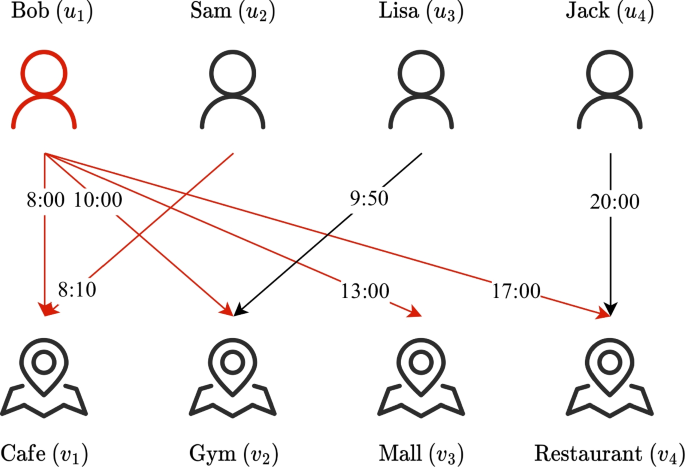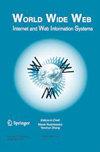FPGN: follower prediction framework for infectious disease prevention
IF 3.4
3区 计算机科学
Q2 COMPUTER SCIENCE, INFORMATION SYSTEMS
World Wide Web-Internet and Web Information Systems
Pub Date : 2023-09-16
DOI:10.1007/s11280-023-01205-8
引用次数: 0
Abstract
Abstract In recent years, how to prevent the widespread transmission of infectious diseases in communities has been a research hot spot. Tracing close contact with infected individuals is one of the most severe problems. In this work, we present a model called Follower Prediction Graph Network (FPGN) to identify high-risk visitors, which is known as follower prediction. The model is designed to identify visitors who may be infected with a disease by tracking their activities at the exact location of infected visitors. FPGN is inspired by the state-of-the-art temporal graph edge prediction algorithm TGN and draws on the shortcomings of existing algorithms. It utilizes graph structure information based on ( $$\alpha $$

FPGN:传染病预防跟随者预测框架
摘要近年来,如何预防传染病在社区的广泛传播一直是一个研究热点。追踪与感染者的密切接触是最严重的问题之一。在这项工作中,我们提出了一种称为追随者预测图网络(FPGN)的模型来识别高风险访客,称为追随者预测。该模型旨在通过跟踪受感染游客的确切位置来识别可能感染疾病的游客。FPGN的灵感来自于最先进的时序图边缘预测算法TGN,并吸取了现有算法的不足。利用基于($$\alpha $$ α, $$\beta $$ β)核的图结构信息,利用时间戳信息统计的时间间隔统计,以及基于gat的预测模块,实现了高精度的追随者预测。在两个真实数据集上进行了大量的实验,证明了FPGN的进展。实验结果表明,与其他SOTA基线相比,FPGN可以获得最高的结果。AP评分高于0.46,AUC评分高于0.62。
本文章由计算机程序翻译,如有差异,请以英文原文为准。
求助全文
约1分钟内获得全文
求助全文
来源期刊

World Wide Web-Internet and Web Information Systems
工程技术-计算机:软件工程
CiteScore
7.30
自引率
10.80%
发文量
131
审稿时长
6 months
期刊介绍:
World Wide Web: Internet and Web Information Systems (WWW) is an international, archival, peer-reviewed journal which covers all aspects of the World Wide Web, including issues related to architectures, applications, Internet and Web information systems, and communities. The purpose of this journal is to provide an international forum for researchers, professionals, and industrial practitioners to share their rapidly developing knowledge and report on new advances in Internet and web-based systems. The journal also focuses on all database- and information-system topics that relate to the Internet and the Web, particularly on ways to model, design, develop, integrate, and manage these systems.
Appearing quarterly, the journal publishes (1) papers describing original ideas and new results, (2) vision papers, (3) reviews of important techniques in related areas, (4) innovative application papers, and (5) progress reports on major international research projects. Papers published in the WWW journal deal with subjects directly or indirectly related to the World Wide Web. The WWW journal provides timely, in-depth coverage of the most recent developments in the World Wide Web discipline to enable anyone involved to keep up-to-date with this dynamically changing technology.
 求助内容:
求助内容: 应助结果提醒方式:
应助结果提醒方式:


